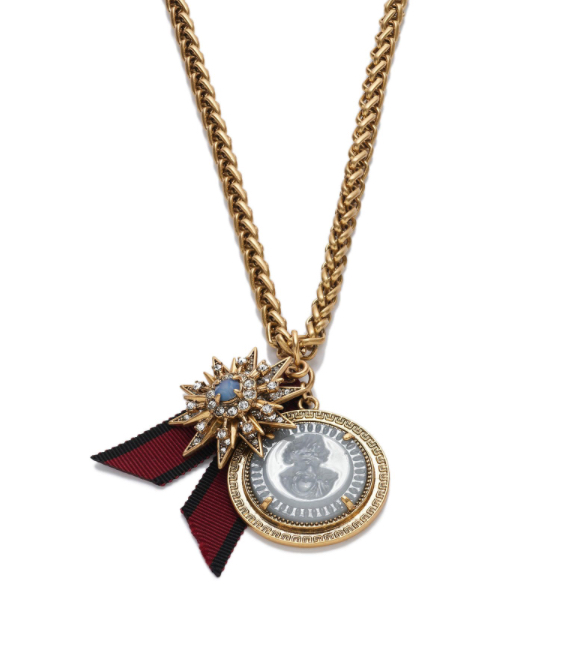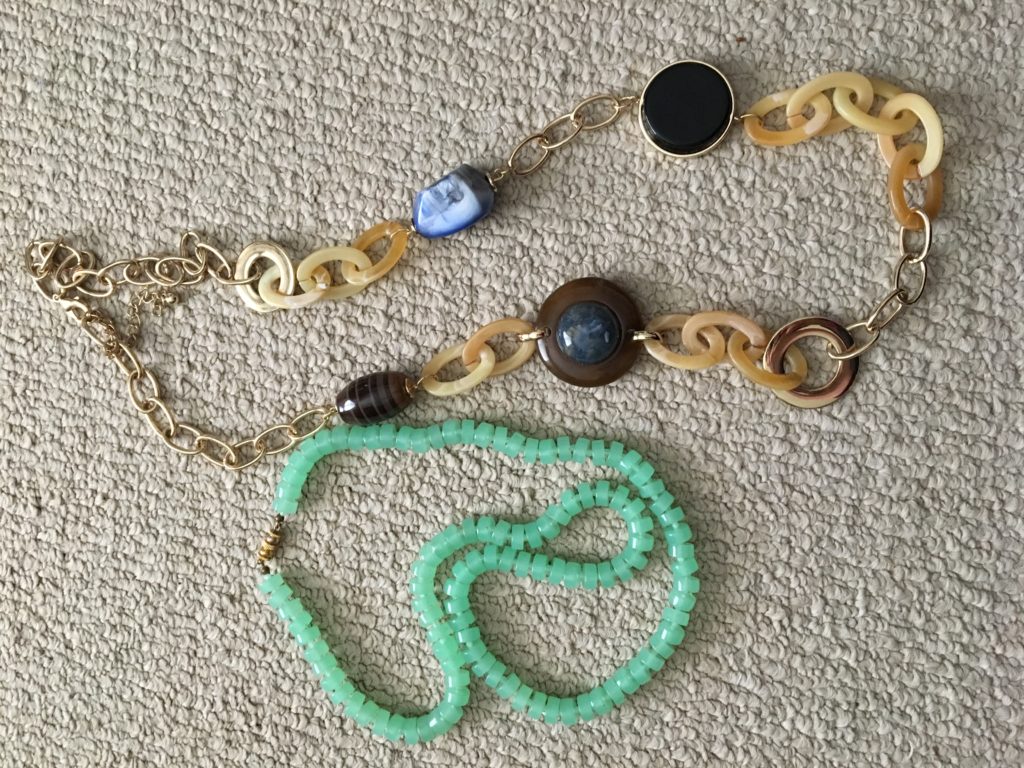I have been obsessed with Dries Van Noten for a while; he’s a master of beautiful prints paired with interesting and unexpected silhouettes. As much as I continue to love colour, I find prints somewhat of a challenge now. Anything that might read as “cute” or “twee” is automatically out; on the flip side, clothing pieces that speak to my aesthetic often seem to come in neutral colours or solids. DvN and Marni are, off the top of my head, the two best known design labels who pair my preferred aesthetic with bold colours and prints. (There are probably others, and I welcome all your suggestions in the comments.)
To go back to the former, I know there are many others who are devoted to DvN; his pieces have relatively high resale value on eBay, The RealReal, and so on, and they rarely turn up in thrift stores. The latter fact pains me. In all my years of thrifting, locally and overseas, I have only ever found one DvN piece. The drive to find more is, no lie, at least 50% of what keeps me going back to thrift stores as often as I do, considering that my wardrobe needs, well, nothing.
Most recently, in addition to my general obsession with scoring a “Dries” – any Dries – I have an added and very specific reason to scour the thrift racks. It all started with this inspo pic I found back when I was researching my style avatars.
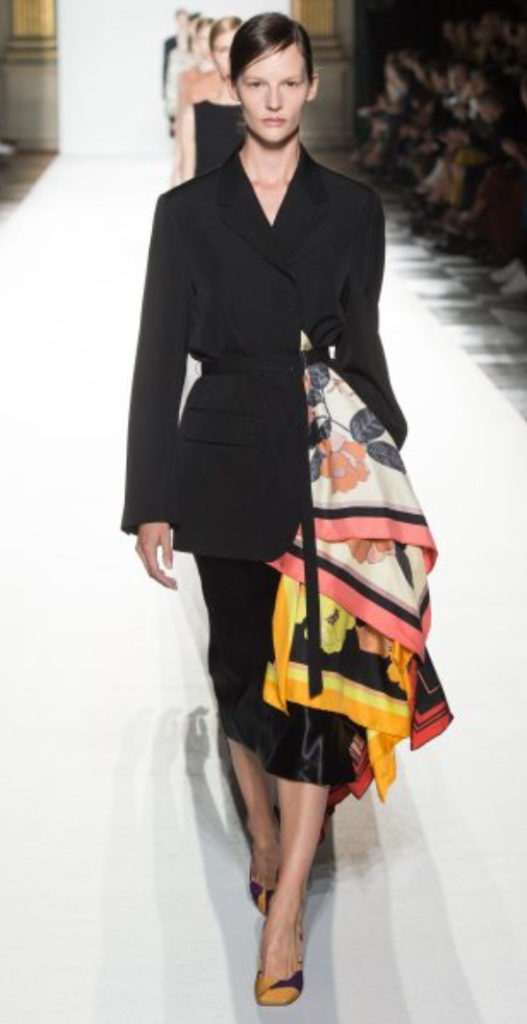
This, to me, is the epitome of chic. I love the silhouette, the dimensions, the balance between restraint and exuberance. Later, I went back and figured out this outfit was part of DvN’s S/S 2018 collection. As I began to do more research, I quickly fell in love with all iterations of this idea:
The skirt:
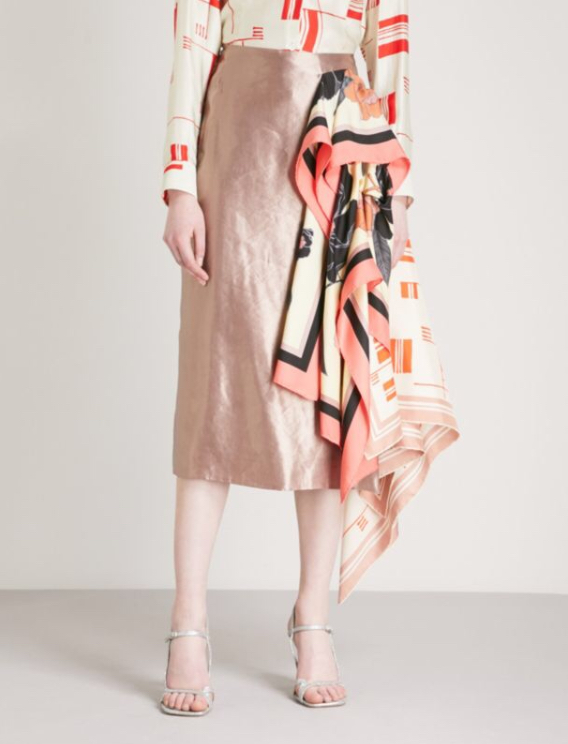
The dress:

The blazer:
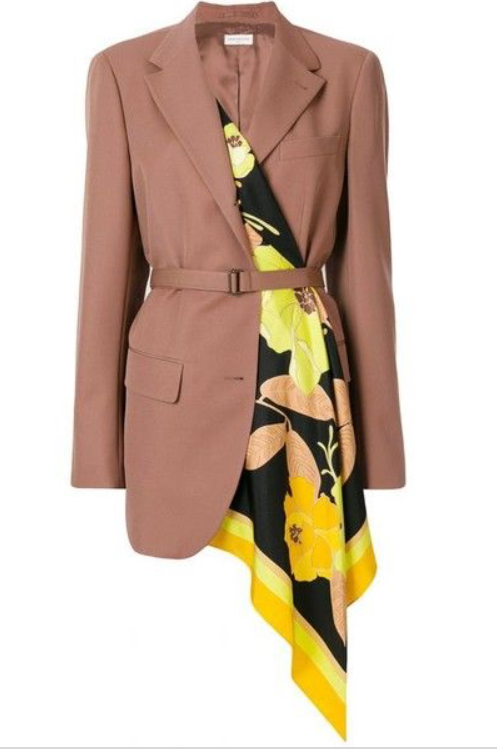
The problem with hunting for something this specific, exclusive, and recent is that the chances of finding it secondhand (in Edmonton) are pretty slim. Possibly f*cking none. Online, they have been popping up with some regularity on eBay and TRR in the months since I started my search, but the prices are if not downright prohibitive, then certainly second-guess-inducing. For example, the lowest price I’ve seen for the skirt was over $400 CAD, not including shipping and customs. I pondered that listing for a long time, by the way; in the end, I just couldn’t bring myself to spend so much on a single item that isn’t a MaxMara camel coat – not in the current economic climate, and not at this stage of my life, anyway.
But being responsible sucks. I still loved that skirt (and dress, and blazer) and couldn’t stop thinking about it. And so, with all apologies to Mr. Van Noten, I began looking for an alternative. A DIY alternative, to be precise.
After all, how difficult could it be?
Well, not easy. This is the genius of Dries Van Noten, master of print mixing. He makes it look easy, but finding two completely different patterns that create a perfect, unexpected-yet-brilliant, beautiful pairing is hard AF. I looked for suitable scarves in clashing-but-matching, bold-but-not-gaudy patterns for months, with little success. I was almost ready to give up, and go back to stalking the real thing, when I came across this Echo scarf at Swish, a local vintage/consignment boutique.

This one came with print-mixing already baked in; I liked the contrasting patterns both individually and together, and while neither was as interesting or unusual as a DvN print, they were pleasing to my eye. The scarf was also large enough to drape nicely, and to create a sufficient amount of “drama”. Unlike the scarves used in the DvN skirt, it was not silk; however, since I didn’t have a silk skirt to pair it with anyway, this wasn’t a problem. The cotton twill actually worked better with the wool skirt I initially planned to Franken-Noten.
I was all set to attempt the deed – trying to figure out how the original piece had been sewn together from the stock photos available online was DAUNTING, y’all – when another lightbulb moment occurred.
Why make a skirt when I could make …
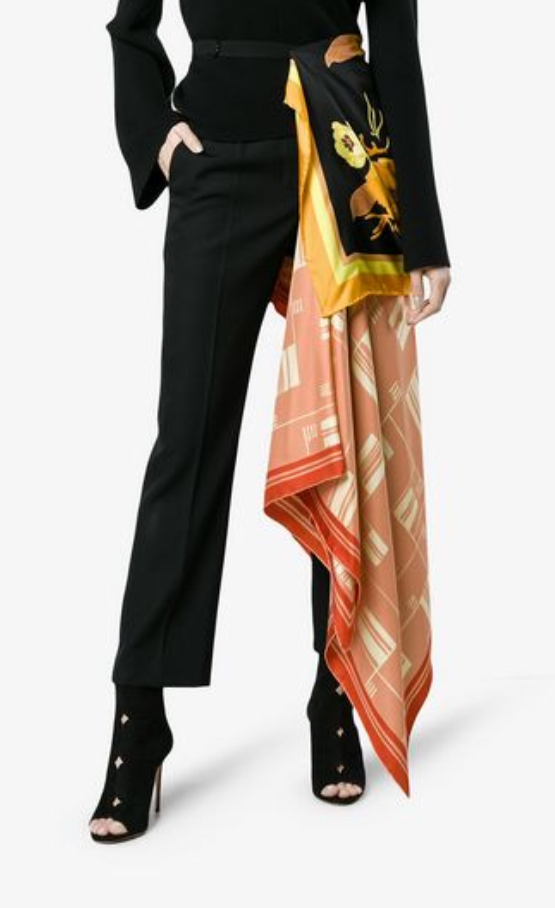
… a belt! A scarf belt that could be used interchangeably with various other pieces in my wardrobe – dresses, skirts, pants, you name it. Genius! And so much easier to DYI!
The only thing I had to do was source a stretchy black belt from the thrift store. I had a couple of similar belts at home already, but they each had embellished closures that I liked and didn’t want to sacrifice. I decided to look for something with minimal hardware – basically, just an elastic band with a couple of snaps, that could ideally adjust to several widths (my natural waist and something closer to my hips). After a couple of weeks of searching, I found a likely candidate:
 =”325″ class=”aligncenter size-large wp-image-16425″ />
=”325″ class=”aligncenter size-large wp-image-16425″ />
Crap quality, but it otherwise fits the bill. I had planned to sew the scarf to the belt, but when the time came, I couldn’t bring myself to do it; instead, I safety-pinned the whole thing. To get the drape, I laid the scarf flat in diamond configuration, then folded down the top corner about 1/3 of the way. Like so:
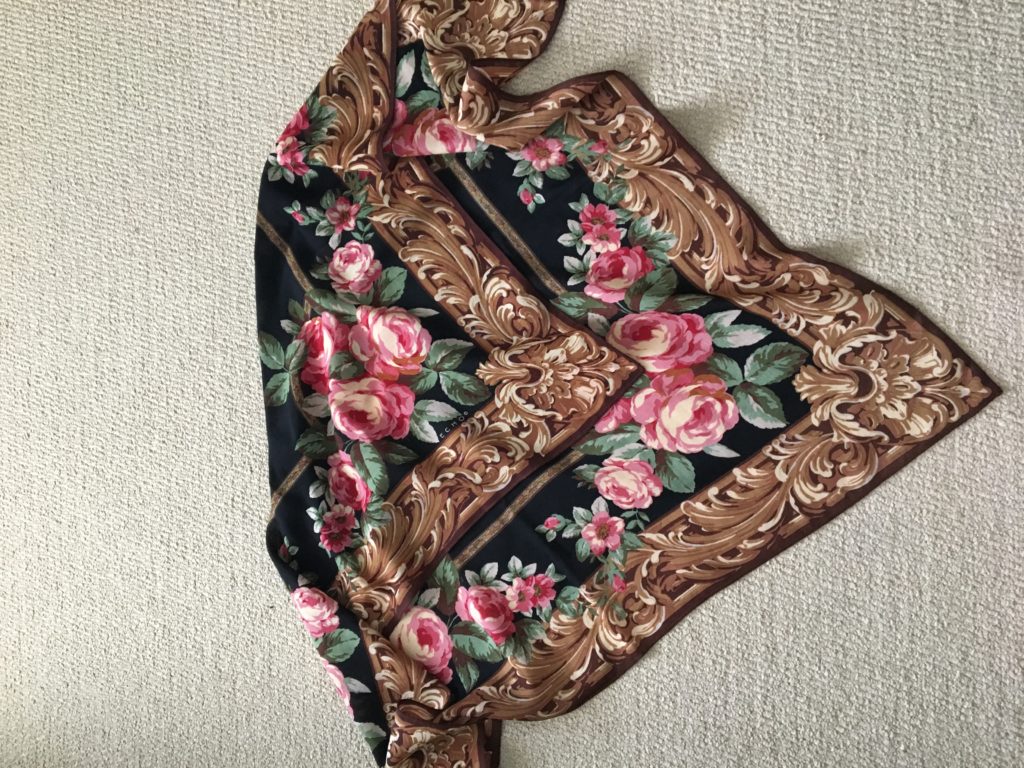
The top (flat) part is what I ended up pinning to the belt. I don’t have a picture of it, but it was easy enough to do – trust. Because I didn’t want to secure it too much (to avoid permanently damaging the scarf), it does need to be adjusted a bit every time it’s put on, but this isn’t too much of a hassle.
I tried my contraption first with a blazer/pants combo, as in this inspo pic:
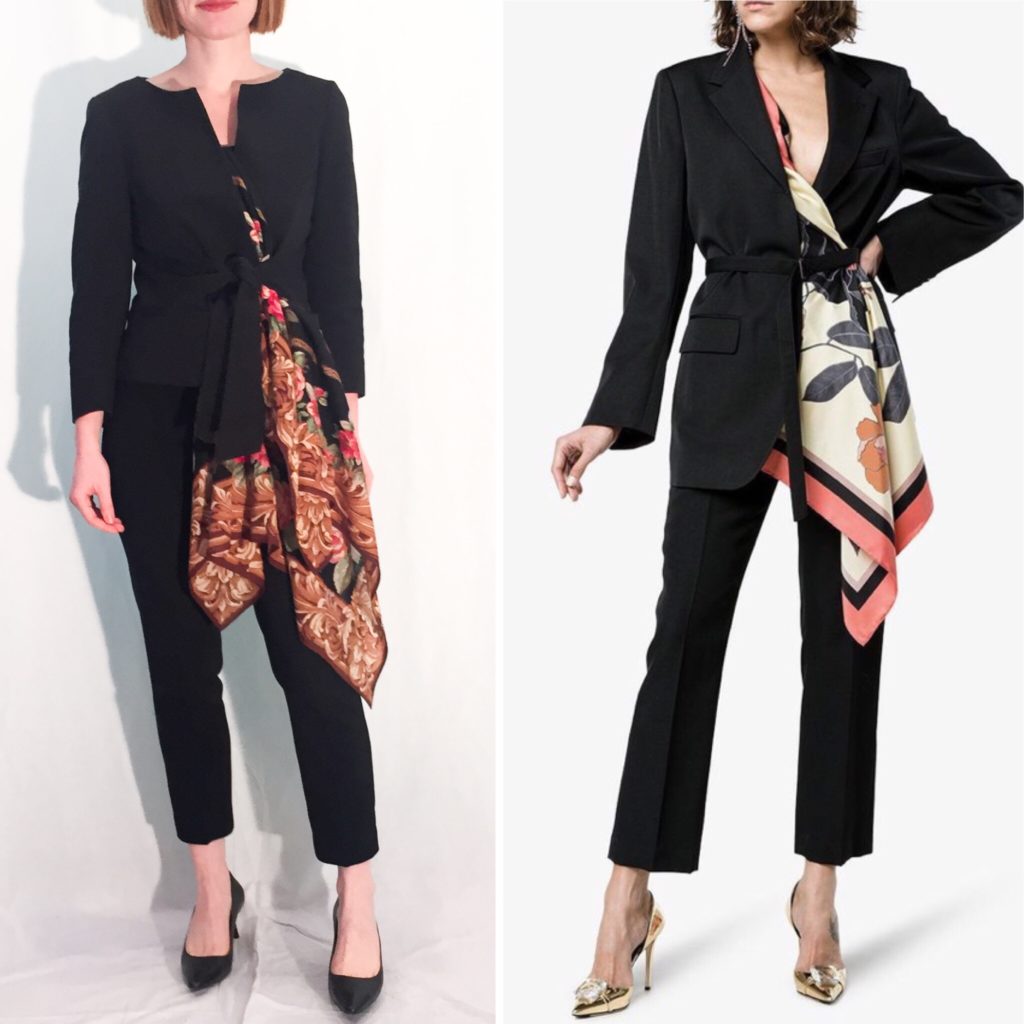
Then, I tried it with a skirt:

As a DYI project, I think this was fairly successful, in that my belt scarf functions as intended. I do think the scarf is a distant second best to having an actual DvN patterned version, but (thrifting) beggars can’t be choosers. The thing that surprised me was that I felt a little bit … well, self-conscious wearing these outfits. Like, maybe having a scarf attached to my hip is where my enthusiasm for the avant-garde meets the limits of my willingness to draw attention to myself. I like these outfits in principle, but I’m not sure if I’m ready to wear them out and about – say, at the office. And this made me wonder if, had I splurged on that $500 skirt, I would have felt the same. Could it be that I just saved myself $500 worth of regrets? Possibly. I have noticed that, while my Dries stalking continues (online and IRL), my lust for the scarf pieces has cooled significantly.
I haven’t decided yet whether I’m going to attempt to test out my DYI project in public, but I’m psyching myself up for it. If you’ve gone through a similar experience – falling in love with a more avant-garde piece, only to realize later that it might be somewhat outside your actual comfort zone – I’d love to hear about it.


